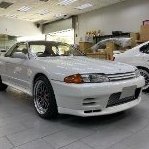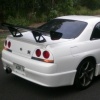Carbon Fibre Tail Shaft
Announcements
-
Similar Content
-
Latest Posts
-
Unfortunately, we don't have any salvage yards around here with any Foresters that are around 2004. I'll try them again next Wednesday or Thursday when they open.
-
So am I not supposed to post on here about Subarus? As far as going to a dealership, they were closed today, and will be closed at least the next 2 or 3 days. I wanted to get one ordered and never thought I would have such a problem. Pretty ridiculous if you ask me!
-
Good call, and dial 00 and be ready to hit one more. Not saying it isn't safe....but I'd be more scared than first start on a rebuilt RB








Recommended Posts
Create an account or sign in to comment
You need to be a member in order to leave a comment
Create an account
Sign up for a new account in our community. It's easy!
Register a new accountSign in
Already have an account? Sign in here.
Sign In Now